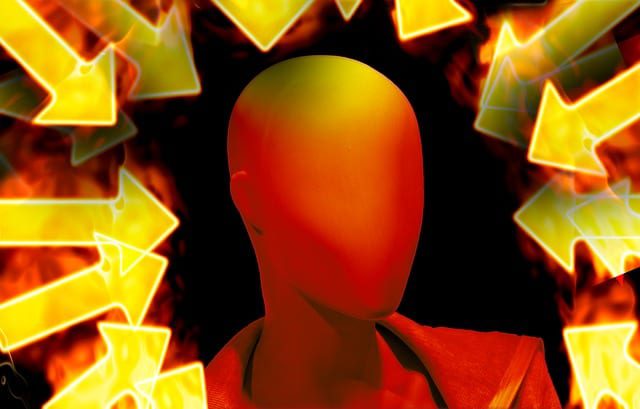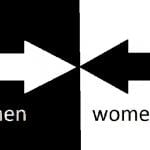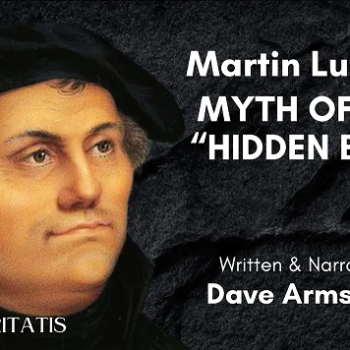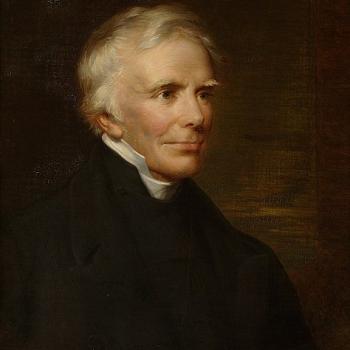
Atheist anti-theist Jonathan M. S. Pearce is the main writer on the blog, A Tippling Philosopher. His “About” page states: “Pearce is a philosopher, author, blogger, public speaker and teacher from Hampshire in the UK. He specialises in philosophy of religion, but likes to turn his hand to science, psychology, politics and anything involved in investigating reality.” .
*****
I am replying to Jonathan’s paper, “Contradictions in the Resurrection of Jesus Accounts” (1-31-21), which is apparently actually written by one David Austin, but in any event, wholly endorsed by Jonathan. It starts out with the usual laundry list of 18 alleged contradictions in the biblical accounts, in a neat little chart. This stuff makes the anti-theist atheist Bible bashers drool. They love it.
*
Most of these sorts of “alleged contradictions” are simply recycled from some prior standard “playbook” atheist volume, which may even be a few hundred years old. I highly doubt that most atheists actually sit reading the Bible, to come up with these bogus “contradictions.” That’s why most of these things never cross most Christians’ minds (including my own): because you have to work very hard to notice them in the first place.
*
Atheists most assuredly do not love it, however, when Christians refute their bogus biblical claims. I have done so scores of times, and it’s almost always so easy — usually involving the simplest of logical errors — that I have come to enjoy these challenges quite a bit; gives me something fun to do. Answering all 18 points in the chart only took me a few hours. Readers can view the chart at the link above. I shall respond to each point by number below.
*
1) “Women at Tomb“: Not contradictory because in questions of numbers of people said to do something or be somewhere, etc., an actual logical contradiction requires exclusionary clauses such as “only x, y, and z were there and no one else” or “only three people witnessed incident a.” None of the Gospel texts do that here; hence, no demonstrable contradiction (see Mt 28:1; Mk 16:1; Lk 24:1-10; Jn 20:1). Some atheists who concede this logical shortcoming will nonetheless (rather desperately) go on to argue that it is still a “contradiction” in some sense because, after all, the texts don’t all say exactly the same thing.
*
Unfortunately, that’s not how logic works, and it is ridiculous and downright unrealistic to “demand” that four separate accounts written by as many people must report what was seen in identical fashion; otherwise, the ubiquitous atheist cry of “contradiction!” will raise its ugly and obnoxious head.
*
2) “Guards at the tomb“: Not a contradiction merely because Matthew mentions this and the other three Gospels don’t. Arguments from silence prove nothing. A true contradiction would require one or more of the other three to say something like “the tomb was unguarded.” That‘s a direct contradiction. It would be nice if once in a while atheists could actually produce one of those. As it is, they make fools of themselves all the time with these pseudo-“contradictions” that aren’t at all. It’s embarrassing.
*
One would think that logic (like fresh air, cute puppies, and the joy of ice cream) is something where Christians and atheists could readily agree with each other. But sadly, that’s not the case: at least not in the “1001 biblical contradictions” sub-group of anti-theist atheists. They wouldn’t know a real contradiction from a hole in the ground.
*
3) “Time of women’s visit“: the descriptions in RSV are “toward the dawn . . . [they] went to see the sepulchre” (Mt 28:1) [David Austin describes it as “day was dawning”], “very early . . . they went to the tomb when the sun had risen” (Mk 16:2), “at early dawn, they went to the tomb” (Lk 24:1) — clearly no contradiction so far — “; then we have: “Mary Mag’dalene came to the tomb early, while it was still dark” (Jn 20:1). A plausible resolution is to posit that John describes an earlier visit of Mary Magdalene only. She then would have gone back with other women (since she is mentioned in all four accounts — as the chart notes in #1 –, but alone only in John 20:1).
*
The inevitable atheist objection might then be: “well, then why didn’t the text say it was an earlier visit?” Because it doesn’t have to. It’s a silly demand. They would simply be describing different visits to the tomb. It would be like my saying, “my daughter got up and ate breakfast” [and shortly after I went off to work], and my wife [stay-at-home mom] saying [referring to the same morning], “my daughter and her brother ate brunch together.”
*
Though the two accounts don’t reference each other, they don’t contradict at all. Our daughter ate two meals; one being alone and the other not. But in fact, in the Gospel of John the text does show Mary visiting alone (20:1), then running to tell the disciples the tomb was empty (20:2), and then after “the disciples went back to their homes” (20:10), being outside the tomb again, weeping (20:11) and then seeing the risen Jesus (20:14-17) and then going to the disciples and telling them she saw Jesus risen (20:18).
*
4) “Reason for visit“: Matthew says two women “went to see the sepulchre”; that is, they wanted to see if it was left as it was when Jesus was laid there: in order to apply burial spices. What other reason would there be? Mark and Luke mention the intent to anoint Jesus’ body. Matthew doesn’t contradict that. It simply (arguably) describes it in different terms. John gives no reason, but again, the logical thing is to assume it is referring to anointing of the body. They wanted to get it done as soon as the sun came up. It was Jewish ritual. In April 2019 I refuted atheist Bob Seidensticker (one of 71 unanswered times) regarding Jewish burial spices. I made a humorous (but quite apt) analogy in that paper, relevant to this section:
*
First of all, just because John does not state the reason why Mary went to the tomb, it doesn’t follow that no reason existed. This is not a contradiction. . . . One might say, by the same token: “Early on the first day of the week, while it was still dark, Bob Seidensticker went to the bathroom”. Did he go there for “no reason” too? Or is it reasonable to assume that he must have had some reason, which was not stated in this particular description, but also is not that difficult to surmise? Maybe an additional account (say, Bob’s diary) could conceivably inform us that he went to empty his bladder, comb his hair, and brush his teeth (and perhaps also to spend a minute admiring a sophist in the mirror).
*
Austin noted twice that John stated that the body was already anointed. But it’s plausible to hold that the women thought it was hastily or insufficiently done after the crucifixion, for lack of time, since it was getting dark. So they went again (after the Sabbath day was over). It’s just another trumped-up faux-“contradiction” that is not at all. One wearies of this. Believe me, as an apologist who deals with this all the time, it’s far beyond frustrating by now. On the other hand, I’m delighted to have these golden opportunities to demonstrate the bankruptcy of anti-theist attempts to tear down the Bible and Christianity.
*
5) “Stone rolled away“: Matthew seems to mention it as occurring in the women’s presence; the other three Gospels portray it as having already happened when they got there. Catholic apologist Karlo Broussard ably tackles this one:
*
Once again, the objection makes a false assumption—namely, that Matthew is intending to assert that the women witnessed the angel rolling away the stone. But a close examination of the text proves otherwise. First, as A. Jones argues in A Catholic Commentary on Holy Scripture, the entire passage concerning the angel, the stone, and the guards who “trembled and became like dead men” (Matt. 28:2-4) seems to be a parenthetical statement. It’s unlikely that the women would have conversed with the angel while the guards laid there as if dead.
*
Furthermore, the details concerning the angel and the stone are introduced with the Greek conjunction gar: “And behold, there was a great earthquake; for [Greek, gar] an angel of the Lord descended from heaven and came and rolled back the stone, and sat upon it” (28:2, emphasis added). Such an explanatory conjunction is used to introduce a clarification of a previous part of the sentence. For Matthew, the angel rolling away the stone is his explanation for the earthquake, not to assert that the women witnessed a stone-moving spectacle.
*
This answer could be further supported by Matthew’s use of an indicative mood in the aorist verb tense of ginomai: “And behold, there was [Greek, egeneto] a great earthquake” (28:2, emphasis added). The aorist verb tense in the indicative mood usually denotes the simple past. So a possible translation is “an earthquake had occurred,” implying the women didn’t witness it. Even the angel’s descent can be described as having already occurred, since the aorist participle katabas (“descended”) can be translated with the English past perfect: “for an angel of the Lord had descended” (28:2; ISV, emphasis added). (“Biblical Resurrection Reports Are Not ‘Hopelessly Contradictory’ “, Catholic Answers, 7-11-17)
*
6) “Earthquake“: Only Matthew mentions it, but this is explained in the explanation provided for #5 above. It was a past incident.
*
7) “Angels/men seen at the tomb“: Again, the explanation in #5 accounts for the uniqueness of Matthew’s account (angel sitting on a rolled-away stone). The various reports of angels’ actions are not necessarily contradictory at all. Angels are (in the biblical view: believe it or not), extraordinary supernatural creatures, and they do lots of appearing and disappearing. Austin makes an issue out of Matthew and John referring to “angels” but Mark and Luke calling them “men.” But he notes that in Luke they were later referred to as “angels” (24:23).
*
And that’s because both terms are used for angels. In Genesis 19, for example, “two angels” visit Lot (19:1), but in the same passage they are also called “men” twice (19:10, 12) and then “angels” again (19:15) and “men” again (19:16). In Judges 13, this interchangeability is striking, with reference to an “angel” (13:3, 6, 9, 13, 15-18, 20-21) and “man” (13:6, 10-11): referring to the same being.
*
8) “Did women/woman enter tomb?“: Mark and Luke say they did. Matthew and John don’t. But to contradict the other two reports, they would have to outright deny that it happened. And of course they don’t do that, so (sorry, guys!), no contradiction is present. Matthew strongly implies that they did, however, because the angel says to them, “Come, see the place where he lay. Then go quickly and tell his disciples that he has risen from the dead . . .” (28:6-7).
*
9) “Did disciple[s] visit tomb?“: John says Peter and John (“the other disciple, the one whom Jesus loved”: John’s humble terminology to refer to himself); Luke says “Some of those who were with us [i.e., apostles: 24:10, 13] went to the tomb” [24:24]. It doesn’t specify Peter, as Austin claims, but it might be taken as strongly implied by “The Lord has risen indeed, and has appeared to Simon!” (24:34). No contradiction so far (by the same logical criteria I have repeatedly explained, here, and many times to atheists in the past).
*
Matthew doesn’t specifically say, but it says that the women “ran to tell his disciples” (28:8). Now what would you do if you were Jesus’ disciples — in despair over His crucifixion — and were told that He had risen from the dead? Of course, you would run to the tomb to see, which is exactly what Luke and John report, and which Matthew surely strongly insinuates. Austin presupposes the view that Mark 16:9-20 is not actually part of the Gospel. For a great refutation of that, see Dave Miller: “Is Mark 16:9-20 Inspired?” Apologetics Press, 2005 [link] ). But either way, Mark 16 (long or short) doesn’t specifically say that a disciple went to the tomb. But it doesn’t deny it, either, so it is the good ol’ notorious argument from silence again. So: no problem in the final analysis.
*
10) “Did disciple[s] enter tomb?“: John says Peter and John did; the others say nothing (argument of silence and thus, no contradiction). To not mention something is not the same as a denial. If I don’t mention that the sun came up this morning, it doesn’t follow that I denied it. If I forget to say “I love you” to my wife one day, I highly doubt that she will conclude that I don’t, based only on that. This kind of “reasoning” is just dumb. It’s unworthy of any thinking person.
*
11) “What did disciple[s] see?“: Luke and John saw “linen” cloths in the tomb. Matthew and Mark are silent; so no contradiction. Atheists seem to not realize that the four Gospels are obviously complementary to one another. No single one of them is required to report every jot and tittle of an event. They differ (but don’t contradict) just as any four witnesses of a crime usually will report or emphasize different aspects of the truth of what occurred, and perhaps miss some details that other witnesses saw. All of them together, if consistent, verify each other’s claims.
*
Likewise, what one Gospel doesn’t mention is usually mentioned by another. In fact, this silly chart bears strong witness to that, even in its dumbfounded opposition to biblical inspiration and harmony. I’m sitting here (as always) having my faith in biblical inspiration strengthened, because the critical objections are so ridiculously weak and non-substantial. This is the blessing of apologetics.
*
12) “Did women/woman meet Jesus?“: Since Mark and Luke are silent on this aspect, they can’t contradict. Austin attempts to make hay out of the women grabbing Jesus’ feet and worshiping Him in Matthew, but Mary Magdalene later being told “not to touch” Jesus in John 20:17. A. T. Robertson’s Word Pictures in the New Testament explains this:
*
Touch me not (mh mou aptou). Present middle imperative in prohibition with genitive case, meaning “cease clinging to me” rather than “Do not touch me.” Jesus allowed the women to take hold of his feet (ekrathsan) and worship (prosekunhsan) as we read in Matthew 28:9 . The prohibition here reminds Mary that the previous personal fellowship by sight, sound, and touch no longer exists and that the final state of glory was not yet begun. Jesus checks Mary’s impulsive eagerness (A T Robertson, Word Pictures in the New Testament, John 20:17).
*
Almost all more recent English translations reflect this more specific (prolonged, more intense) sense of touch: *
RSV: hold
*
TEV / NIV / NRSV / Beck: hold on to
*
NAB: holding on to
*
ESV / NKJV / Weymouth / Barclay / Goodspeed / NEB / REB / Jerusalem / Knox / Amplified: cling
*
NASB / Williams / Wuest / Moffatt: clinging
*
So (guess what?), no contradiction again.
*
13) “What did Jesus say to the women/woman?“: Mark and Luke are silent; Matthew and John say two different, but not contradictory things. So to be contradictory, one or both would have to say, Jesus said only [whatever]. But they don’t.
*
14) “Where was 1st Jesus appearance to Disciples?” Mark doesn’t say. The others don’t indicate that their account was the “first” appearance (Austin baldly assumes this to be the case), so different harmonious chronologies are entirely possible to construct (and a “contradiction” impossible to undeniably construct).
*
15) “Where was 2nd Jesus appearance to Disciples?” Matthew and Mark are silent, and so irrelevant. John doesn’t specify that there were no visits in-between the two he mentions, and “first and second” can only apply to his version itself (not to the other Gospels), even if we assume that the two mentioned are directly chronological. The same factors apply to Luke’s account.
*
16) “Where was 3rd Jesus appearance to Disciples?” Only John mentions a third in his own account, but this doesn’t prove that it is the third time, period. My replies to #14-15 apply here too. These challenges get easier the more they continue! It’s pretty tough to come up with 18 fake biblical “contradictions”; not even one having any validity or force. Whoever devised this list surely flunked logic (assuming he even took it: and that’s a huge assumption).
*
17) “When did the Disciples receive the ‘Holy Spirit’?“: Matthew, Mark, and Luke are silent. But as Austin notes, Acts [2] places it 50 days later (and most Christians believe Luke wrote Acts). John 20:22 has Jesus visiting ten disciples (minus Thomas and the fallen Judas) and bestowing on them (“receive“) the Holy Spirit. Acts 2 is a completely different public event, with tongues of fire and speaking in tongues. There is no contradiction present. Here they (disciples and any others, too) are described as being “filled with the Holy Spirit” (2:4). Apples and oranges. An apple doesn’t “contradict” an orange.
*
18) “When & where did Ascension happen?“: only one mentions it, so how can it be a contradiction? Acts appears at first glance to conflict with Luke (which would be a self-contradiction), but there are adequate explanations for this. I have already dealt with this topic. *
[to be continued]
***
*
Photo credit: geralt (8-18-16) [Pixabay / Pixabay License]
*
***













